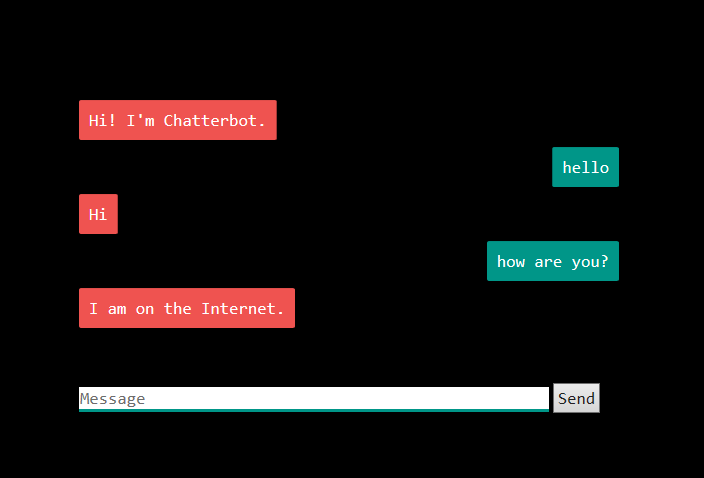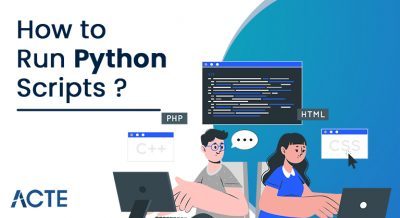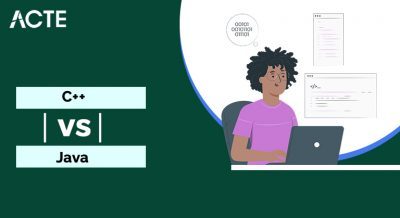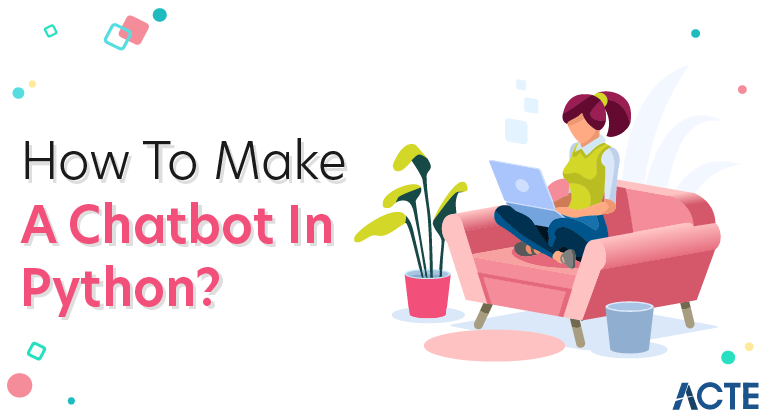
What Is A Chatbot?
- A chatbot also known as a chatterbot, bot, artificial agent, etc is basically software program driven by artificial intelligence which serves the purpose of making a conversation with the user by texts or by speech. Famous examples include Siri, Alexa, etc.
- These chatbots are inclined towards performing a specific task for the user. Chatbots often perform tasks like making a transaction, booking a hotel, form submissions, etc. The possibilities with a chatbot are endless with the technological advancements in the domain of artificial intelligence.
- Almost 30 percent of the tasks are performed by the chatbots in any company. Companies employ these chatbots for services like customer support, to deliver information, etc. Although the chatbots have come so far down the line, the journey started from a very basic performance. Let’s take a look at the evolution of chatbots over the last few decades.
Evolution Of Chatbox
|
Traditional Bots |
Current Bots |
Future Bots |
|---|---|---|
|
System Driven |
Driven by back-and-forth communication |
Communication at multiple-levels |
|
Automation based |
The automation is at the task level |
Automation at the service level |
|
Minimal Functionality |
Maintains system context |
Ability to maintain task, system and people context |
|
Maintained only system context |
Maintains task context as well |
Introduction to master bots and eventually a bot OS as well. |
Limitations With A Chatbot
With increasing advancements, there also comes a point where it becomes fairly difficult to work with the chatbots. Following are a few limitations we face with the chatbots.
- Domain Knowledge – Since true artificial intelligence is still out of reach, it becomes difficult for any chatbot to completely fathom the conversational boundaries when it comes to conversing with a human.
- Personality – Not being able to respond correctly and fairly poor comprehension skills has been more than frequent errors of any chatbot, adding a personality to a chatbot is still a benchmark that seems far far away. But we are more than hopeful with the existing innovations and progress-driven approaches.
How Does It Work?
We can define the chatbots into two categories, following are the two categories of chatbots:
- Rule-Based Approach – In this approach, a bot is trained according to rules. Based on this a bot can answer simple queries but sometimes fails to answer complex queries.
- Self-Learning Approach – These bots follow the machine learning approach which is rather more efficient and is further divided into two more categories.
- Retrieval-Based Models – In this approach, the bot retrieves the best response from a list of responses according to the user input.
- Generative Models – These models often come up with answers than searching from a set of answers which makes them intelligent bots as well.
ChatterBot Library In Python
ChatterBot is a library in python which generates responses to user input. It uses a number of machine learning algorithms to produce a variety of responses. It becomes easier for the users to make chatbots using the ChatterBot library with more accurate responses.
Language Independence
The design of ChatterBot is such that it allows the bot to be trained in multiple languages. On top of this, the machine learning algorithms make it easier for the bot to improve on its own using the user’s input.
How Does It work?
- ChatterBot makes it easy to create software that engages in conversation. Every time a chatbot gets the input from the user, it saves the input and the response which helps the chatbot with no initial knowledge to evolve using the collected responses.
- With increased responses, the accuracy of the chatbot also increases. The program selects the closest matching response from the closest matching statement that matches the input, it then chooses the response from the known selection of statements for that response.
Language Independence
The design of ChatterBot is such that it allows the bot to be trained in multiple languages. On top of this, the machine learning algorithms make it easier for the bot to improve on its own using the user’s input.
How Does It work?
- ChatterBot makes it easy to create software that engages in conversation. Every time a chatbot gets the input from the user, it saves the input and the response which helps the chatbot with no initial knowledge to evolve using the collected responses.
- With increased responses, the accuracy of the chatbot also increases. The program selects the closest matching response from the closest matching statement that matches the input, it then chooses the response from the known selection of statements for that response.
How To Install ChatterBot In Python?
Run the following command in the terminal or in the command prompt to install ChatterBot in python.
Install chatterboxpip
Trainer For Chatbot
Chatterbot comes with a data utility module that can be used to train the chatbots. At the moment there is training data for more than a dozen languages in this module. Take a look at the data files here.
Following is a simple example to get started with ChatterBot in python.
- from chatterbot import chatbot
- from chatterbot.trainers import ListTrainer
- #creating a new chatbot
- chatbot = Chatbot(‘Edureka’)
- trainer = ListTrainer(chatbot)
- trainer.train([ ‘hi, can I help you find a course’, ‘sure I’d love to find you a course’, ‘your course have been selected’])
- #getting a response from the chatbot
- response = chatbot.get_response(“I want a course”)
- print(response)
Use Case – Flask ChatterBot
After we are done setting up the flask app, we need to add two more directories static and templates for HTML and CSS files. Following is the code for the flask ChatterBot app.
App.py
- from flask import Flask, render_template, request
- from chatterbot import ChatBot
- from chatterbot.trainers import ChatterBotCorpusTrainer
- app = Flask(__name__)
- english_bot = ChatBot(“Chatterbot”,storage_adapter=”chatterbot.storage.SQLStorageAdapter”)
- trainer = ChatterBotCorpusTrainer(english_bot)
- trainer.train(“chatterbot.corpus.english”)
- @app.route(“/”)
- def home():
- return render_template(“index.html”)
- @app.route(“/get”)
- def get_bot_response():
- userText = request.args.get(‘msg’)
- return str(english_bot.get_response(userText))
- if __name__ == “__main__”:
- app.run()
Index.html
- !DOCTYPE html>
- <html>
- <head>
- <link rel=”stylesheet” type=”text/css” href=”/static/style.css”>
- <script src=”https://ajax.googleapis.com/ajax/libs/jquery/3.2.1/jquery.min.js”></script>
- </head>
- <body>
- <h1>Flask Chatterbot Example</h1>
- <div>
- <div id=”chatbox”>
- <p class=”botText”><span>Hi! I’m Chatterbot.</span></p>
- </div>
- <div id=”userInput”>
- <input id=”textInput” type=”text” name=”msg” placeholder=”Message”>
- <input id=”buttonInput” type=”submit” value=”Send”>
- </div>
- <script>
- function getBotResponse() {
- var rawText = $(“#textInput”).val();
- <p class=”userText”><span>’ + rawText + ‘</span></p>’;
- $(“#textInput”).val(“”);
- $(“#chatbox”).append(userHtml);
- document.getElementById(‘userInput’).scrollIntoView({block: ‘start’, behavior: ‘smooth’});
- $.get(“/get”, { msg: rawText }).done(function(data) {
- var botHtml = ‘<p class=”botText”><span>’ + data + ‘</span></p>’;
- $(“#chatbox”).append(botHtml);
- document.getElementById(‘userInput’).scrollIntoView({block: ‘start’, behavior: ‘smooth’});
- });
- }
- $(“#textInput”).keypress(function(e) {
- if(e.which == 13) {
- getBotResponse();
- }
- });
- $(“#buttonInput”).click(function() {
- getBotResponse();
- })
- </script>
- </div>
- </body>
- </html>
Style.css
- body
- {
- font-family: Garamond;
- background-color: black;
- }
- h1
- {
- color: black;
- margin-bottom: 0;
- margin-top: 0;
- text-align: center;
- font-size: 40px;
- }
- h3
- {
- color: black;
- font-size: 20px;
- margin-top: 3px;
- text-align: center;
- }
- #chatbox
- {
- background-color: black;
- margin-left: auto;
- margin-right: auto;
- width: 40%;
- margin-top: 60px;
- }
- #userInput {
- margin-left: auto;
- margin-right: auto;
- width: 40%;
- margin-top: 60px;
- }
- #textInput {
- width: 87%;
- border: none;
- border-bottom: 3px solid #009688;
- font-family: monospace;
- font-size: 17px;
- }
- #buttonInput {
- padding: 3px;
- font-family: monospace;
- font-size: 17px;
- }
- .userText {
- color: white;
- font-family: monospace;
- font-size: 17px;
- text-align: right;
- line-height: 30px;
- }
- .userText span {
- background-color: #009688;
- padding: 10px;
- border-radius: 2px;
- }
- .botText {
- color: white;
- font-family: monospace;
- font-size: 17px;
- text-align: left;
- line-height: 30px;
- }
- .botText span {
- background-color: #EF5350;
- padding: 10px;
- border-radius: 2px;
- }
- #tidbit {
- position:absolute;
- bottom:0;
- right:0;
- width: 300px;
- }
Output:
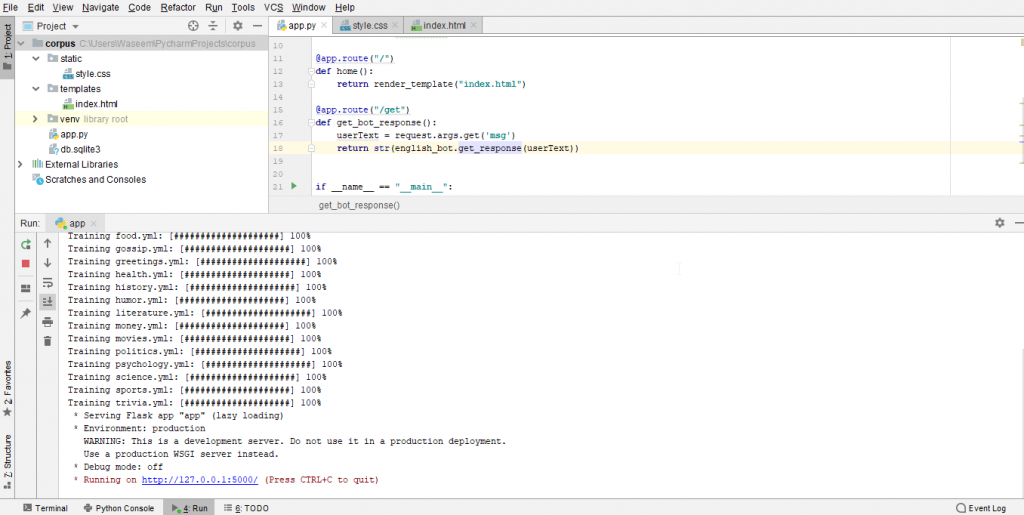
Go to the address shown in the output, and you will get the app with the chatbot in the browser.
